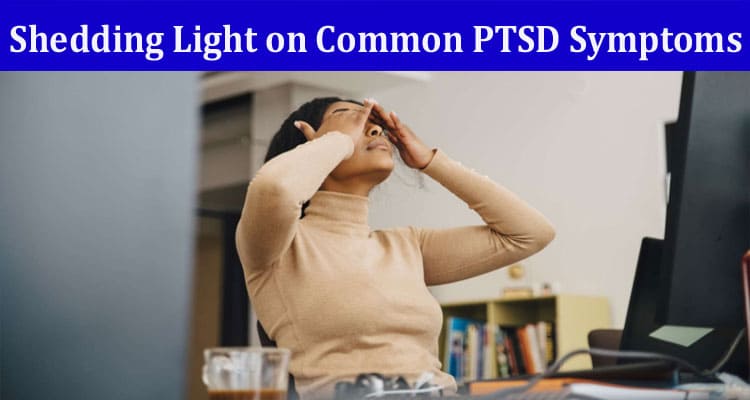A new documentary is being developed to highlight the impact PTSD has on first responders across the country. We’re excited to work with filmmaker Conrad Weaver on this project to illuminate this often-ignored issue.
PTSD can cause mood changes, including negative thoughts, anger, distrust, and guilt or shame. It can also lead to avoidance, a pattern of staying away from people and places that remind you of the traumatic experience.
Anxiety
Anxiety is a normal response to trauma but can also be a sign of PTSD. While everyone feels nervous occasionally, if these feelings are persistent and accompanied by other symptoms, you may need to visit a mental health professional.
People with PTSD feel jittery or on edge, even when no real threat exists. They may avoid certain people, places or activities because they remind them of the trauma. They may lose interest in things they used to like and find it difficult to concentrate or sleep. They may blame others for their problems and behave aggressively or recklessly.
Children with PTSD often have intrusive, upsetting thoughts about the trauma they cannot control. They may complain of stomachaches or headaches that no medical professional can explain. They may have trouble concentrating, be easily startled, and become highly sensitive to noise and light. They may believe they will die or be hurt again and develop beliefs about themselves, such as being bad or not worthy of love.
These symptoms are similar to those of generalized anxiety disorder (GAD) but with one difference: Those who have PTSD experience these feelings without a trigger, and they remain anxious for longer periods. Talking to a trusted family member, taking medication, exercising and using a mindfulness practice are all effective ways to manage these symptoms.
Distressing Dreams
Survivors of trauma often have nightmares that replay the event and cause distress. The nightmares can be so disturbing that they make it hard to sleep and can also be one of the common symptoms of PTSD. Nightmares can involve hearing a constant ringing in the ears, having a sense of being cut off from others and seeing faces that appear to be coming at them from behind (paranoid ideation).
People with PTSD often avoid places or people they believe are reminders of the traumatic experience. They may also try to avoid things that trigger memories, such as watching news reports about the traumatic event or driving on a highway where they were involved in a motor vehicle accident.
For children, nightmares are a different way of expressing their distress, and they can often be more general rather than re-living the traumatic events in the dream. It’s important to check in with children if they start to have unsettling nightmares, as it can be a sign of PTSD.
A trained mental health professional can help with cognitive restructuring, which involves examining and changing negative beliefs about yourself, other people and the world associated with your traumatic memories. It can be used to tackle PTSD, as well as depression and anxiety, by gradually confronting distressing memories over time in a safe environment.
Avoidance
Often, people with PTSD avoid anything that reminds them of their trauma. This can include people, places, activities, objects and situations. Eventually, this can become a whole-life-wide strategy, leaving them feeling constricted. They might also experience increased arousal – feelings like being easily startled or jumpy, difficulty sleeping, irritability, loss of interest in previously enjoyable activities, and depression.
Avoidance is part of the “avoidance cluster” of PTSD symptoms. These symptoms include avoiding distressing memories, thoughts and feelings; numbness to emotions; and a lack of desire or interest in friends and family. These severe symptoms can interfere with daily life, making it difficult to perform everyday tasks, such as shopping or commuting to work.
Emotional avoidance is a common emergency coping response to trauma and may help in the short term. However, over time, it can become more damaging than helpful as it prevents a person from healing from the trauma. Talking to a therapist about the problem and finding ways to challenge the avoidance behaviors is an important step toward recovery from PTSD. It is also a good idea to practice re-experiencing the emotions that are being avoided. This can be done through journaling or EMDR therapy. If you’re having trouble overcoming your avoidance, try to set small, achievable goals.
Depression
Depression is a common symptom of PTSD and often co-occurs with anxiety. A person might have trouble sleeping, lose interest in activities they normally enjoy and experience feelings of hopelessness or helplessness. Depression can also make it hard to concentrate or think clearly. Talking with your doctor about treatment options is important if you exhibit these symptoms.
Some people avoid any reminders of the trauma, leading to their lives being constricted. For example, someone in a car accident on a highway may avoid driving anywhere and become afraid of other vehicles. In addition, they may avoid going out to events and stay at home much more than before the accident.
Disrupted sleep is also a common symptom of PTSD. It can be triggered by nightmares, distress, and being easily startled. Disrupted sleep can cause problems like difficulty concentrating, poor performance at work, weight loss, irritability and strained relationships.
Getting treated as soon as possible can help prevent PTSD from interfering with your daily life and causing problems in your close relationships. Many treatments can be used, including support groups and one-on-one talk therapy like cognitive behavioral therapy (CBT) and antidepressants such as SSRIs or SNRIs. If you are thinking about seeking treatment for PTSD, check out the Substance Abuse and Mental Health Services Administration’s online treatment locator tool to find services near you.


